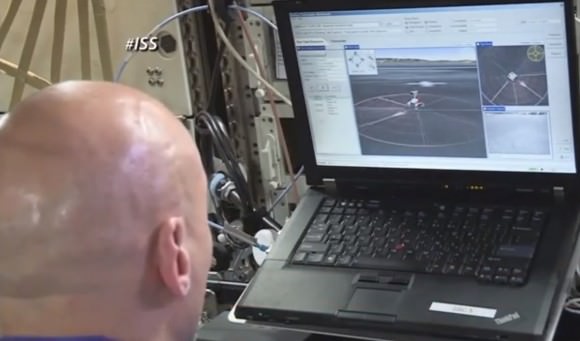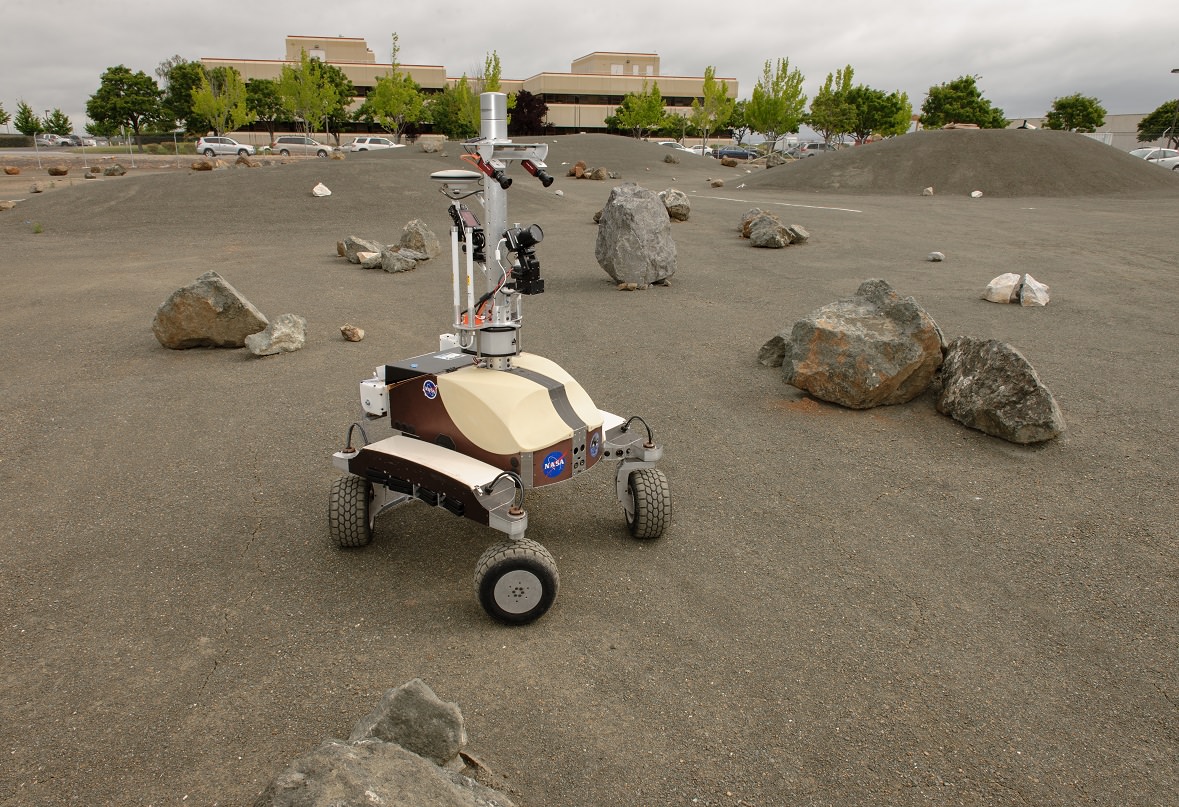Astronauts, start your rover engines. Two astronauts recently remote-controlled a rover vehicle in California from their perch on the International Space Station — about 250 miles (400 kilometers) overhead.
The concept is cool in itself, but NASA has loftier aims. It’s thinking about those moon and asteroid and Mars human missions that the agency would really like to conduct one day, if it receives the money and authorization.
Potentially, say, you could have a Mars crew using rovers to explore as much of the surface as possible in a limited time.
Mars Curiosity and its predecessor rovers have found amazing things on Mars, but the challenge is the average 20-minute delay in communications between Mars and Earth. NASA deftly accounts for this problem through techniques such as hazard avoidance software so that Curiosity, say, wouldn’t crash into a big Martian boulder. (More techniques from NASA at this link.) But having astronauts above the surface would cut down on the time delay and potentially change Mars rover driving forever.

So about that test: two astronauts so far have run the K10 planetary vehicle prototype around a “Roverscape” at NASA’s Ames Research Center in California. NASA calls these runs the “first fully-interactive remote operation of a planetary rover by an astronaut in space.”
Expedition 36’s Chris Cassidy was first up on June 15, spending three hours moving the machine around in the rock-strewn area, which is about the size of two football fields. Then his crewmate Luca Parmitano took a turn on July 26, going so far as to deploy a simulated radio antenna. Another test session should take place in August.
“Whereas it is common practice in undersea exploration to use a joystick and have direct control of remote submarines, the K10 robots are more intelligent,” stated Terry Fong, human exploration telerobotics project manager at Ames.
“Astronauts interact with the robots at a higher level, telling them where to go, and then the robot itself independently and intelligently figures out how to safely get there,” added Fong, who is also director of Ames’ intelligent robotics group.
The tests simulated a mission to the moon’s L2 Lagrangian point, a spot where the combined gravity of the moon and Earth allow a spacecraft to remain virtually steady above the surface. One possibility for such a mission would be to deploy a radio telescope on the lunar side opposite from Earth, far from Earth’s radio noise, NASA said.
These tests also showcase a couple of technical firsts:
- NASA is testing a Robot Application Programming Interface Delegate (RAPID) robot data messaging system to control the robot from space, essentially working to strip down the information to the bare essentials to make communication as easy as possible. (RAPID has been tested before, but never in this way.)
- The agency is also using its Ensemble software in space for telerobotics for the first time. It describes this as “open architecture for the development, integration and deployment of mission operations software.”
Source: NASA


This is cool! I’ve long thought that there was a fair chance the first mission to Mars would simply be a flyby or an orbital mission using remote drones, as it would cut out the very risky landing and takeoff for humans. A failure on launching a box of samples back to the spacecraft would be a little easier to take than losing the first astronauts to land on Mars.
(Of course Tito’s Inspiration Mars, if it flies, is a flyby as I always figured. 🙂 )
I SO want to telecommute to a job on the Moon… or Mars! Or NEA1!